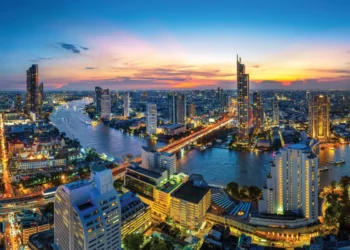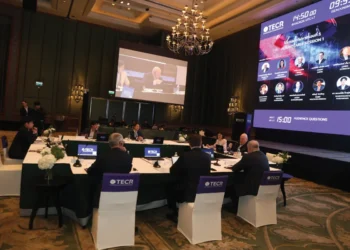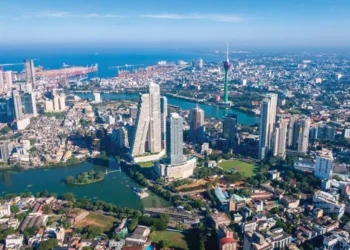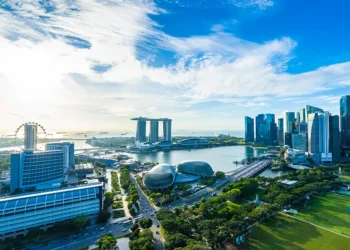With time rapidly running out, it seems highly unlikely that Aichi prefecture will declare its candidacy in Japan’s IR race. But there are still a handful of operators showing interest behind the scenes.
The IR bidding race in Japan has well and truly entered the middle game. The application period for prefectures to apply for an IR bid is 1 October 2021 to 28 April 2022 by which time local governments must each select an operator to partner with and submit their joint application.
 Yokohama, Osaka, Nagasaki and Wakayama are the four locations to have confirmed their intention to participate at this point in time, with Aichi standing alongside Tokyo as a potential candidate that expressed an early interest without ever making a firm commitment either way.
Yokohama, Osaka, Nagasaki and Wakayama are the four locations to have confirmed their intention to participate at this point in time, with Aichi standing alongside Tokyo as a potential candidate that expressed an early interest without ever making a firm commitment either way.
All four confirmed candidates have already begun their public offering processes and have narrowed down operators to either one or a few options. They will be finalizing these decisions in summer before applying to the national government.
Despite this, IAG understands that there are still a handful of operators showing interest in and even holding out for Aichi prefecture. So why Aichi, and what are the prefecture’s thoughts? IAG digs a bit deeper.
IS IT LIGHTS OUT FOR AICHI?
While Aichi prefecture has previously shown interest in an IR bid, at the Prefectural Assembly last September the prefectural policy planning bureau director stated, “We are proceeding with inspections and research at Central Japan International Airport and the surrounding area (50 hectares on the airport island owned by the prefecture available for use), in hopes of realizing an international tourist city with a focus on MICE. [When collecting opinions], a total of 13 companies participated, including four domestic and international companies interested in development and operations as well as nine domestic companies with first-hand know-how.
“[However], due to the COVID-19 pandemic, there were limitations, particularly on overseas operators’ considerations for marketability and operability. We want to see how this public hearing goes.”
There has been very little progress since, and it seems certain that the timeline is now too tight for Aichi to take part in Japan’s first issuing of IR licenses. Why then are operators continuing to discuss Aichi?
POTENTIAL
The population of Aichi prefecture is 7.5 million, which makes it Japan’s fourth largest population base after Tokyo, Kanagawa and Osaka. The prefectural GDP is over JPY40 trillion (US$368 billion), second only to Tokyo. The most interesting point is that once the Linear Chuo Shinkansen (bullet train between Tokyo and Nagoya) is completed in 2027, the trip will only take 40 minutes, bringing the population within a 2-hour radius of Nagoya city to nearly 60 million. That means it could be an ideal destination not only for tourists from overseas, but also an excellent destination for domestic travel.
 AIRPORT PROXIMITY
AIRPORT PROXIMITY
The candidate location is adjacent to the Chubu International Airport (Centrair), which reduces travel time and is perfect for international guests. This airport is open 24 hours a day and is also flexible in accepting private jets. The airport island area already has social infrastructure in place, including rail and road access. However, since it is adjacent to the airport, regulations limit building heights to 45 meters, which may affect hotel development plans. A prefectural representative told IAG, “No decisions have been made, such as any additional infrastructure required being the responsibility of the operator.”
ONE OF A KIND
Aichi Sky Expo, which opened in this area in 2019, is an exhibition center connected directly to the airport that boasts a 90,000 square-meter floor space and 60,000 square-meter exhibition space. It should be noted that this is the only exhibition center in Japan with a customs-free zone. A customs-free zone is a space that allows for easy procedures or use without customs duties in order to facilitate smooth operation of world-class trade shows with foreign goods held by expos or public institutions. This is encouraging for an IR, which must incorporate MICE facilities.
 INITIAL INVESTMENT
INITIAL INVESTMENT
There is one more important point that is appealing to operators. The initial investment level would likely be lower than the “big guns” of Tokyo or Yokohama. With the COVID-19 pandemic having reduced the appetite for spending of upwards of US$10 billion, Aichi potentially represents an investment sweet spot that is lower than the large metropolitan centers but larger than the regional IRs proposed for Nagasaki and Wakayama.
OFFICIAL VIEW
According to a prefectural representative, “We are continuing to meet with operators who submitted proposals during the RFC. We are listening to opinions about how much the COVID-19 pandemic has affected operators, but we haven’t confirmed that any are able to commit to an IR in Japan. To be frank, we can’t be sure when the operators will fully recover so it’s hard to make a decision either way.”
However, time is running out. Regarding that detail, the same representative said, “Other regions have already conducted RFPs and seem to be close to deciding on operators. We are aware that Aichi is a cycle or two behind them. We believe that we must make a correct decision taking into account the national government’s rule that the ‘selection must be impartial, fair and open.’
“We are making considerations based on the April deadline, and we’ve kept that deadline in mind. If we do bid, we will aim for that, but we haven’t made the decision yet.”
 This suggests that Aichi hasn’t completely closed the door on an IR, even at this late stage of the game.
This suggests that Aichi hasn’t completely closed the door on an IR, even at this late stage of the game.
Conversely, to operators it must appear that the local government isn’t set on an IR bid, which makes it hard to take action. To local governments, if operators aren’t champing at the bit, it’s hard to imagine a successful scenario and pull the trigger on a decision. If one or the other took the first step, there is potential for a frenetic dash to the finish line.
































